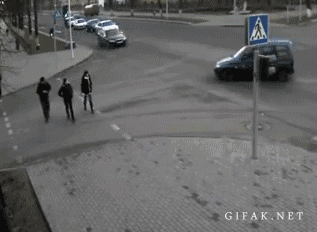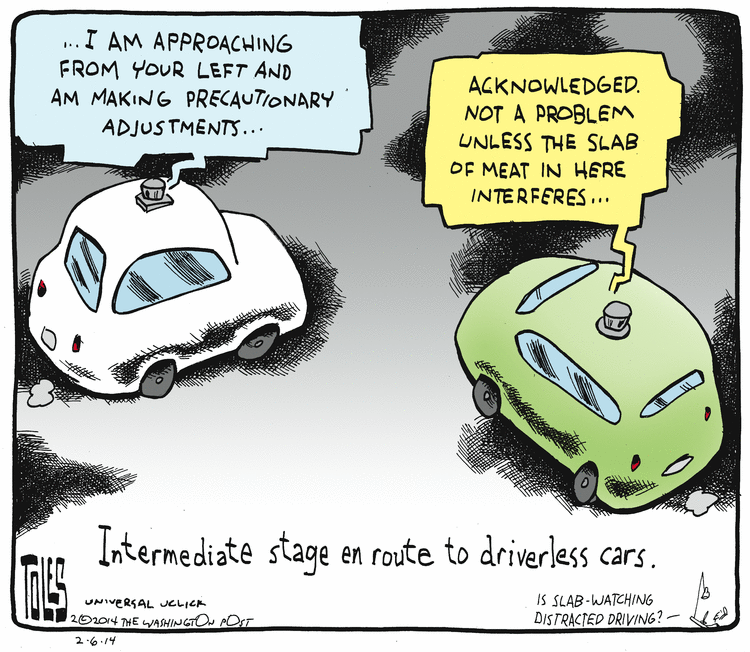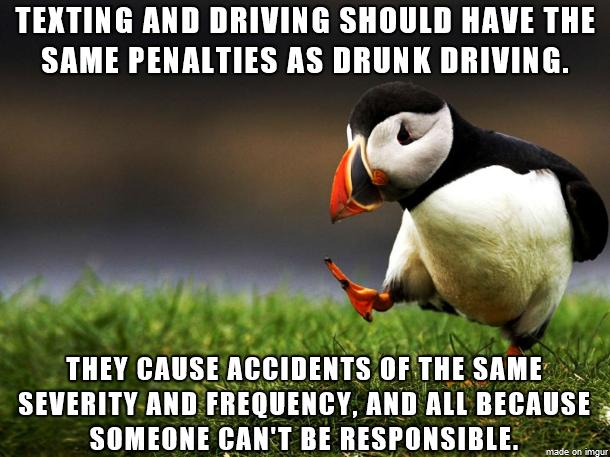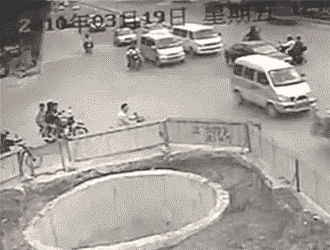We Need Self-Drive Cars

Road Toll
-
Cars waste lives. They are one of America’s leading causes of avoidable injury and death, especially among the young. Oddly, the most immediately devastating consequence of the modern car—the carnage it leaves in its wake—seems to generate the least public outcry and attention. Jim McNamara, a sergeant with the California Highway Patrol, where officers spend 80 percent of their time responding to car wrecks, believes such public inattention and apathy arise whenever a problem is “massive but diffuse.” Whether it’s climate change or car crashes, he says, if the problem doesn’t show itself all at once—as when an airliner goes down with dozens or hundreds of people on board—it’s hard to get anyone’s attention. Very few people see what he and his colleagues witness daily and up close: what hurtling tons of metal slamming into concrete and brick and trees and one another does to the human body strapped (or, all too often, not strapped) within.
In contrast, a roadside wreck is experienced by the vast majority of drivers as a nagging but unavoidable inconvenience—just another source of detours and traffic jams. Increasingly popular and powerful smartphone traffic apps eliminate even those brief close encounters with the roadway body count, routing savvy drivers away from crash-related congestion. The typical car wreck is becoming all but invisible to everyone but those who are killed or maimed and those whose job is to clean it up. Many are aware at some level that troubling numbers of people are injured and die in cars, but most remain unfazed by this knowledge.
This disparity in attention between plane crashes and car crashes cannot be justified by their relative death tolls. Quite the contrary: In the 14 years following the terrorist attacks of 9/11, there were eight crashes on American soil of passenger planes operated by regional, national, or international carriers. The death toll in those crashes totaled 442. That averages out to fewer than three fatalities a month.
The death toll on America’s streets and highways during that same period since 9/11 was more than 400,000 men, women, and children. The traffic death toll in 2015 exceeded 3,000 a month. When it comes to the number of people who die in car wrecks, America experiences the equivalent of four airliner crashes every week.
A normal day on the road, then, is a “quiet catastrophe,” as Ken Kolosh, the statistics chief for the National Safety Council, calls it. He ought to know: He makes his living crafting the annual statistical compendium of every unintentional injury and death in the country.
Car crashes are the leading cause of death for Americans between the ages of 1 and 39. They rank in the top five killers for Americans 65 and under (behind cancer, heart disease, accidental poisoning, and suicide). And the direct economic costs alone—the medical bills and emergency-response costs reflected in taxes and insurance payments—represent a tax of $784 on every man, woman, and child living in the U.S.
The numbers are so huge they are not easily grasped, and so are perhaps best understood by a simple comparison: If U.S. roads were a war zone, they would be the most dangerous battlefield the American military has ever encountered. Seriously: Annual U.S. highway fatalities outnumber the yearly war dead during each Vietnam, Korea, Iraq, Afghanistan, the War of 1812, and the American Revolution. When all of the injuries from car wrecks are also taken into account, one year of American driving is more dangerous than all those wars put together.

Driverless vehicles are expected to “eliminate bad driving” by 2020.
-
(Telegraph 23 May 2015)
Car insurance premiums could be just a fraction of current levels in five years’ time as driverless vehicles are expected to “eliminate bad driving” by 2020.
Deaths and injuries caused by accidents are expected to virtually disappear and whiplash claims and car park disputes, which together account for 94pc of all insurance claims and cost insurers almost £3bn a year, could become a thing of the past as driverless technology will park our cars, brake automatically and swerve to avoid pedestrians and cyclists.
• Driverless cars will shave '£265' off insurance premiums in five years
The hi-tech cars that will bring about these dramatic improvements are expected to be introduced to Britain’s roads as early as 2018 to 2020, according to a gathering of industry experts held last week.
To find out what this means for your car insurance in the future, Telegraph Money looked at the findings from the annual British Insurance Brokers’ Association (Biba) conference in Manchester.
What does the technology do?
Driverless cars aim to eliminate human error on the roads, whether it’s dodgy parking, accidentally reversing into an object or person or straying into the wrong lane in a motorway.
Already a quarter of new cars, including Volvos and Mercedes, have driverless technology installed, which can take over the controls when parking, shake drivers in their seats if they drift into the wrong lane, or perform an emergency stop to prevent a collision.
Autonomous emergency brakes reduce accidents by up to 25pc, and 45pc in the best systems, according to Thatcham, which tests vehicle safety. The most basic systems automatically kick in when you are driving at 10mph, meaning you won’t accidentally hit a car in front during a traffic jam, for example, while others can reduce the impact of high-speed crashes.
Insurers already offer a 10pc discount on cars with driverless technology, such as emergency braking systems, which typically cost between £300 and £1,000 to install.
But the technology is about to get more invasive. Cars could soon automatically take control if the driver is over the alcohol limit, for example, or is showing signs of being too sleepy to drive. Major carmakers are involved in this development, alongside technology firms such as Google.
Fully automated vehicles are expected to account for 90pc of cars on British roads within five years.
The change will “really begin” in 2018, said Matthew Avery, director of safety research at Thatcham, when carmakers Tesla and Mercedes plan to introduce automated driving to cities in Britain with vehicles that drive without your hands or your feet touching the controls.
According to predictions by KPMG, the consulting firm, self-driving vehicles will save more than 2,500 lives and prevent more than 25,000 serious accidents per year on Britain’s roads by 2030.
The report, commissioned by the Society of Motor Manufacturers & Traders (SMMT), predicted that motor premiums would fall as safety improves, accident data becomes more available, and liability shifts from drivers to manufacturers.
Who will be liable if a driverless car crashes?
Currently 71pc of all car insurance claims result from a vehicle reversing badly, and 23pc from parking incidents. Both are expected to be eliminated on roads with driverless cars.
Instead, “catastrophic crashes” – when a driverless car malfunctions – will account for most accidents, said Mr Avery.
Currently, motor insurance is priced on the basis that the driver is liable to pay for any damage they do to themselves or others. But if the car itself is to blame, manufacturers could be liable to foot the bill instead.
“It’s not yet certain who is liable when an accident occurs and the owner isn’t driving,” added Mike Hors of the SMMT.
This could be a matter for the courts to decide, said Mr Hors. “There will be test cases, possible legislation, there are lots of questions we have yet to answer.”
Brokers and insurers, however, insist that car insurance will always have a place as the industry will adapt to driverless vehicles.
Graeme Trudgill of Biba said: “Liability is a very interesting conundrum. If we eliminate accidents caused by human error, we could move towards a model where people pay much cheaper insurance rates as the cost is shifted towards ‘product liability’.
“However, if manufacturers are paying for the crashes that do occur, they will need to claw that cost back. This could be reflected in a higher cost for driverless cars.”
Could car insurance disappear?
Car cover won’t disappear entirely because we will still want insurance against fire, theft, damage from such things as fallen trees and so on. But cover for accidents of the type that should be eliminated by driverless technology.
This could halve the cost of car cover in just five years, according to John Leech, head of motor at KMPG. "Premiums could halve once we have vehicles which communicate with each other and an 'autopilot mode' when driving on the motorway – this is likely to happen approximately around 2020," he said.
Insurance priced by your driving habits
Currently, insurers work out premiums based on the driver’s profile, their claim history, car and location. So you may pay a higher price depending on your age or occupation, for example, regardless of how well you drive.
But this could be about to change. Cars of the future will automatically track and record driving data, meaning customers with a record of safe driving could negotiate a lower premium.
Already 323,000 British motorists have cars with “black box” technology that tracks driving data and report this information back to insurers. Most are younger drivers, who can save as much as £1,000 a year by opting for a “telematics” policy.
Mr Trudgill said the data should belong to customers for them to take to brokers, insurers and carmakers to get an insurance quote.
“It’s almost like a credit rating – the data should be easily accessible and understandable to customers, so that they can take this information to insurers and if they’re a good, safe driver get a discount.”
But this could open the door for a new type of insurance fraud, warned Neil Mercia, from Axa, the insurer. “If one customer gives me 20,000 miles of driving data and another customer gives me 500, is it fair that I, as an insurer, treat them in the same way?”
Data-sharing could potentially penalise customers who are honest with their driving habits, as bad drivers could “select the driving data they want to get a cheaper price at a cost to a more honest customer”, Mr Mercia said.
The first move towards an automated future will take place in October when all new cars will be fitted with technology that automatically calls the emergency services in the event of a crash.
New European rules will require all new cars to have the technology installed as standard. Then, by 2016, “black box” telematics will be installed in every new car.

